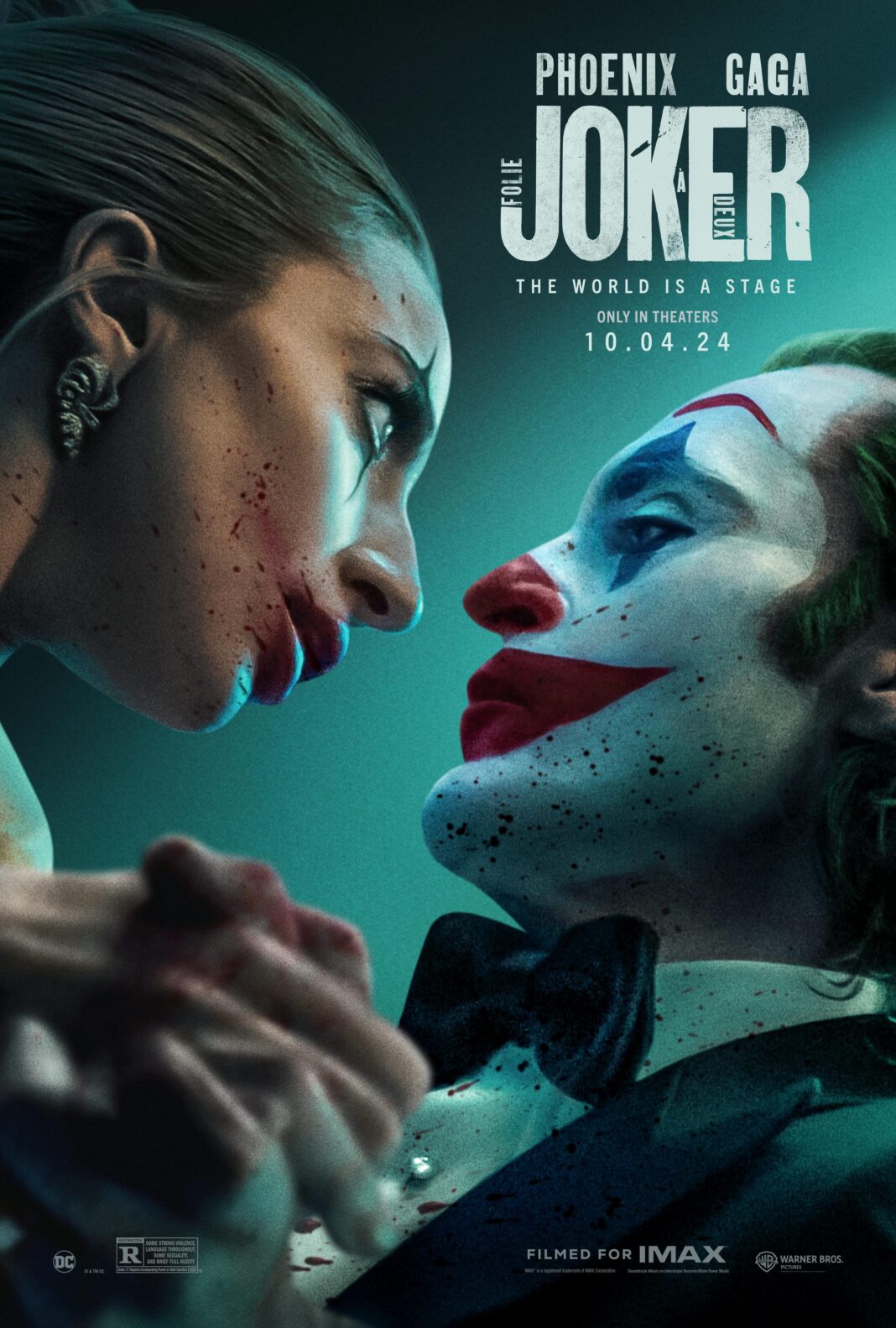Todd Phillips’ Joker: Folie à Deux is the highly anticipated follow-up to the 2019 hit Joker, but this time, Phillips ventures even further into uncharted waters. Released in 2024, the sequel takes bold risks with a striking blend of psychological drama and musical theatrics. Reprising his Oscar-winning role, Joaquin Phoenix returns as Arthur Fleck, a deeply disturbed man whose transformation into the Joker captivated audiences worldwide. Joining him is Lady Gaga as Harley Quinn, in a role that not only redefines the character but also reshapes the dynamic of the film itself. But does this ambitious mix of genres live up to the legacy of its predecessor, or does it falter under the weight of its own daring creativity?
An Unconventional Musical Approach
Joker: Folie à Deux is no ordinary sequel. Rather than leaning on the formulaic tropes of comic book cinema—explosive action scenes or convoluted villain arcs—this film dives headfirst into a musical format, which serves as a metaphor for Arthur Fleck’s psychological unraveling. Todd Phillips, who teased that Phoenix’s portrayal of Arthur had opened doors for deeper exploration, takes the leap here, blending eerie musical sequences with the psychological tension that marked the first film. The result is disorienting yet mesmerizing, offering a fresh take on what a comic book movie can be.
Lady Gaga’s portrayal of Harley Quinn, or Harleen Quinzel, is as much a revelation as it is a reinvention. She enters the story as a psychiatrist at Arkham Asylum who becomes fascinated with Arthur Fleck, but their bond soon mutates into something darker and more dangerous. The duo’s descent into madness is punctuated by musical numbers that expose the depths of their shared psychosis. Lady Gaga’s raw and imperfect vocal performance, while surprising for someone known for her powerhouse voice, mirrors Harley’s unstable mental state, adding another layer of authenticity to her character. These sequences don’t just entertain—they unsettle, and that is precisely where the film’s genius lies.
Delving Deeper into Madness and Society
At its core, Joker: Folie à Deux maintains the thematic threads of its predecessor, focusing on Arthur Fleck’s fragile mental state and his role as an unwilling symbol for Gotham’s underbelly. However, this time, the narrative pushes even further into societal critique, highlighting the public’s morbid fascination with violence, fame, and mental illness. Phillips and co-writer Scott Silver craft a story that isn’t just about a man turning into a villain; it’s a commentary on how society elevates figures like Arthur Fleck into symbols, whether they deserve it or not.
Arthur is not depicted as the “Clown Prince of Crime” here, nor is he a criminal mastermind. Instead, Folie à Deux zooms in on his fractured inner world, his growing detachment from reality, and his desperate search for connection. Harley Quinn becomes both a reflection of Arthur’s delusions and a force of her own. Their relationship is a complex one—at times tender, but always teetering on the brink of destruction. It is the portrayal of their symbiotic madness, rather than traditional hero-villain dynamics, that elevates this film beyond its genre.
A Showcase of Stellar Performances
Joaquin Phoenix’s return as Arthur Fleck is nothing short of masterful. He brings the same intensity that earned him an Academy Award, but this time, his performance is layered with a haunting vulnerability. His live musical performances—Phoenix sings rather than lip-syncing—give an additional dimension to Arthur’s character. These moments are as unsettling as they are revealing, highlighting a man both trapped in his delusions and seeking freedom through them.
Lady Gaga’s Harley Quinn, meanwhile, is a far cry from previous cinematic versions of the character. This Harley is grounded in the realism that Phillips established in the first Joker film. Gone are the campy elements, replaced instead by a deeply disturbed woman whose relationship with Arthur feels both inevitable and tragic. Gaga’s portrayal is mesmerizing, and her unpolished singing adds to the rawness of her performance. By not striving for vocal perfection, she channels Harley’s mental unraveling in a way that feels both intimate and chaotic.
The supporting cast also excels. Brendan Gleeson as Arkham guard Jackie Sullivan offers a sobering counterpoint to Arthur’s madness, while Catherine Keener’s portrayal of Arthur’s lawyer, Maryanne Stewart, adds a layer of humanism to a world otherwise consumed by insanity. Zazie Beetz’s return as Sophie Dumond, though brief, serves as a poignant reminder of the life Arthur could never have.
A Bold Visual and Musical Journey
Visually, Folie à Deux stands apart from its peers. Director of photography Lawrence Sher uses stark contrasts between Gotham’s gritty exterior and the hyper-stylized musical numbers to great effect. The film’s color palette and production design are bold, with Arkham Asylum feeling particularly claustrophobic, mirroring the tight grip that madness holds over the characters.
The musical score by Hildur Guðnadóttir once again sets the tone for the film, seamlessly integrating with both the quieter, more introspective moments and the larger, more chaotic musical set pieces. The songs, which range from classic tunes like “Get Happy” to darker, original compositions, juxtapose violence with levity in a way that is deeply unsettling.
A Divisive Masterpiece
Joker: Folie à Deux will undoubtedly polarize audiences. For those expecting a traditional comic book film, its lack of action sequences and focus on character study may feel slow or even jarring. But for those open to the experimental fusion of psychological drama and musical madness, it’s a cinematic experience unlike any other. The film refuses to adhere to the expectations of its genre, pushing the boundaries of what a sequel—and indeed, what a film—can achieve.
Ultimately, Folie à Deux is an audacious, risky sequel that deserves credit for its ambition. It may not be for everyone, but for those willing to embrace its chaotic spirit, it offers a fascinating, disturbing, and emotionally charged journey through the minds of two of Gotham’s most infamous figures.
Coming to a theatre near you Friday October 4, 2024.









